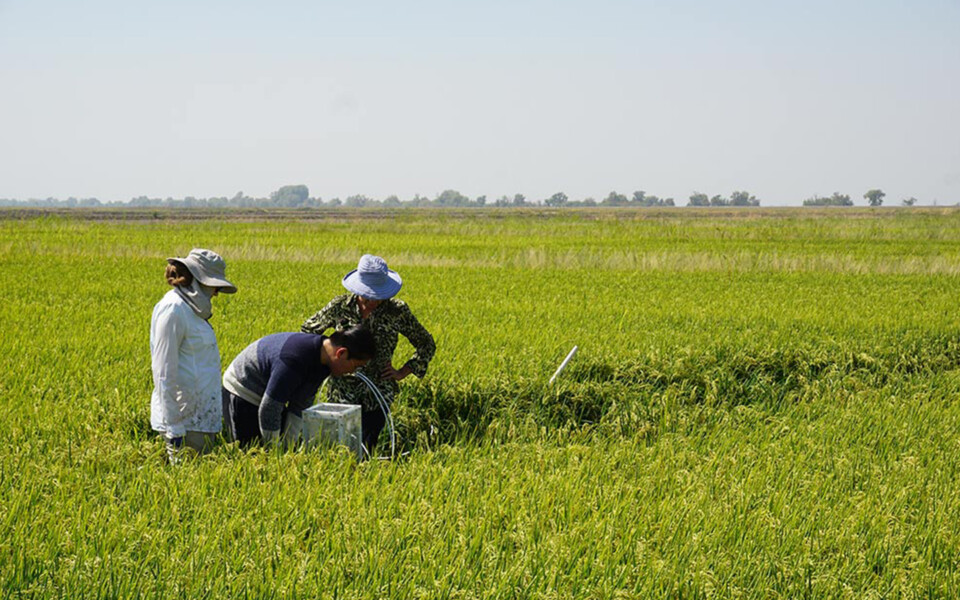Supercharging Plants and Soils to Remove Carbon from the Atmosphere
New funding from the Chan Zuckerberg Initiative kickstarts CRISPR-enabled carbon removal research at the Innovative Genomics Institute
A new research program at the Innovative Genomics Institute (IGI), supported by a $11 million commitment from the Chan Zuckerberg Initiative (CZI), seeks to use CRISPR genome editing to enhance the natural ability of plants and soil microbes to both capture and store carbon from the atmosphere. Along with efforts to reduce existing sources of emissions, carbon dioxide removal (CDR) could play an increasingly important role in reducing the global impact from climate change and reversing its course, according to the Intergovernmental Panel on Climate Change (IPCC). In any discussion of CDR, it is often noted that we already have technologies that do this quite well: plants, microbes, and other living organisms, but they were optimized for a world without large amounts of excess carbon produced by human activities. The IGI project aims to enhance the natural carbon-removal abilities of living organisms to meet the scale of the climate change problem.
Over the past year, CZI has invested in the development of promising technologies to help address climate change at scale as part of an exploration of cutting-edge and emerging climate solutions, including CDR technologies. The IGI program is the latest recipient of support, and one of the first to apply CRISPR genome editing to the worldwide CDR effort.
“We’re excited to support the Innovative Genomics Institute’s important research into new applications of gene-editing technology,” says CZI co-founder and co-CEO Dr. Priscilla Chan. “This technology has the potential to supercharge the natural abilities of plants, enabling them to pull more carbon out of the atmosphere and store more carbon in their roots and the surrounding soil — providing a new set of innovative tools to address climate change.”
One of the biggest challenges with current nature-based solutions is that the carbon that gets removed from the atmosphere typically returns to the atmosphere over a relatively short time span, often respired by soil microbes as carbon dioxide. For natural CDR to have a meaningful impact, the carbon needs to be retained in soils over long periods of time.
Until the advent of modern agriculture about 200 years ago, global soils provided a reliable long-term sink for carbon, but since that time soils have lost carbon equal to 487 billion metric tons of carbon dioxide, a massive amount of carbon that is roughly on par with the US’s cumulative fossil CO2 emissions since the industrial revolution. The IGI team sees an opportunity to increase levels of soil carbon across broad swaths of managed agricultural lands. Restoring soil carbon has the additional benefit of enhancing soil structure, improving water use efficiency and nutrient availability, and feeding beneficial soil microbial communities.
In addition to enhancing the carbon removal ability, the team anticipates other benefits. Improving the efficiency of photosynthesis could translate into higher yields and reduced needs for fertilizer and irrigation, all of which could prove helpful to a growing population on a warming planet.
“Climate change is the most serious problem facing the world today, with impacts on hunger, spread of disease, biodiversity, the global economy, and nearly every aspect of human life,” says IGI founder and Nobel Laureate Dr. Jennifer Doudna. “We’ve understood for some years that CRISPR genome editing could be used to help agriculture adapt to climate change. It’s a thrilling new step to apply the same toolkit to carbon removal and address climate change directly.”
The IGI program is tackling the research in three working groups composed of researchers at UC Berkeley, UC Davis and Lawrence Livermore National Laboratory, each focusing on a different stage of the journey of carbon from the atmosphere, through plants to roots, and into the soil.
A group led by David Savage, Krishna Niyogi, Pamela Ronald, and IGI Director of Sustainable Agriculture Brian Staskawicz, will focus on editing rice varieties for improved photosynthesis to remove carbon from the atmosphere more efficiently, and optimizing both root development and root exudates that can promote carbon sequestration in the soil. A second group led by Peggy Lemaux and Myeong-Je Cho, Director of the Plant Genomics & Transformation Facility at the IGI, is developing new high-efficiency genome editing protocols for the biomass crop sorghum to enable editing for enhanced CDR. The final group, led by IGI Director of Microbiology Jill Banfield and Jennifer Pett-Ridge, will develop techniques to trace carbon fixed by the improved cultivars, and study the soil microbial communities that actively promote long-term carbon storage. Real-world impact will require widespread adoption of the outputs of this work, so alongside the scientific efforts, Melinda Kliegman, Public Impact Director at the IGI, will develop a deployment plan and work to address societal considerations to ensure that the developments from this work meet the needs of end users.
“These efforts are starting locally in labs and fields at UC Berkeley and UC Davis, but we’ve developed this program specifically so that the impact can scale rapidly around the globe,” says Brad Ringeisen, IGI Executive Director and lead PI on the project.
Not only do plants and microbes have an inherent ability to capture carbon from the atmosphere, they can also store it in biomass and in soils of croplands, which cover ⅓ of the Earth’s land surface. Focusing on globally important commercial crops like rice and sorghum ensures that the impacts of adopting this technology will be spread around the world and benefit low- and middle-income communities. The team estimates that by increasing sorghum photosynthetic carbon capture and expanding cropping into marginal lands, it may be possible to achieve a net increase of up to 1.4 billion metric tons of CO2 equivalent captured annually worldwide, half of which could be stored in a long-lived form when combined with biomass conversion technologies. The IGI team’s advances can be extended in the future as this work is applied to other crops, such as wheat and corn.


